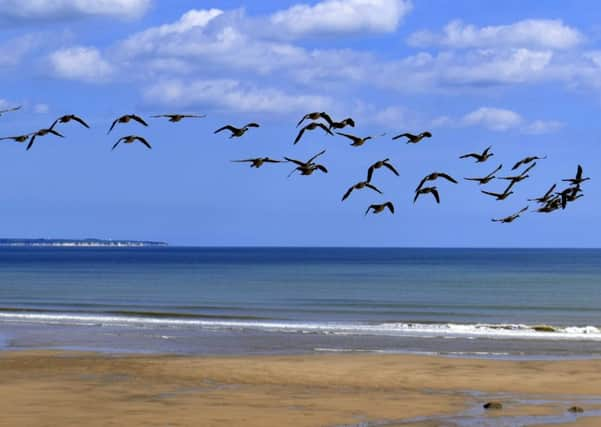A wild goose chase that really is a sight to behold on the Yorkshire coast


They certainly catch the eye when you see them in full flight with their distinctive black head and neck and large white throat patch.
The Canada Goose belongs to the Branta family of birds that includes the Barnacle Goose and the lifespan of these birds is between 10 and 25 years - apparently the oldest recorded wild Canada Goose was 32 years old.
Advertisement
Hide AdAdvertisement
Hide AdThey are nature migratory but those living in the UK tend to be resident birds. They are distinguished by flying in a neat ‘V’ formation during long distance migration and large flocks roost together in the autumn and winter on mud banks.
Canada Geese are sociable birds and their preferred habitat is freshwater areas such as lakes and ponds, as well as flooded sand and gravel pits, marshes, meadows, reservoirs and sometimes estuaries.
As well as being sociable they’re also noisy and you often hear their honking calls before you see them.
Canada Geese were originally introduced to the UK as ornamental birds way back in 1665. Since then the population has grown rapidly, particularly during the past 60 years, with the UK population increasing by nine per cent between 2000 and 2009, helped by the fact that they have few natural predators other than foxes.
Advertisement
Hide AdAdvertisement
Hide AdTheir vegetarian diet includes roots, stems, leaves, grasses on land, fruits and seeds and much of their time is spent grazing on short grass and they can cause damage to pastures and agricultural crops, which means they are seen by some as a bit of a pest.
It’s thought they are responsible for the decline of other species of birds that live near them because of competition for food. Still, there’s no denying they look impressive once they are airborne.
Technical Details: Nikon D5300 camera with a 24-70mm lens and an exposure of 1/500th sec at f11, IS0 250.
Picture: Gary Longbottom
Words: Chris Bond